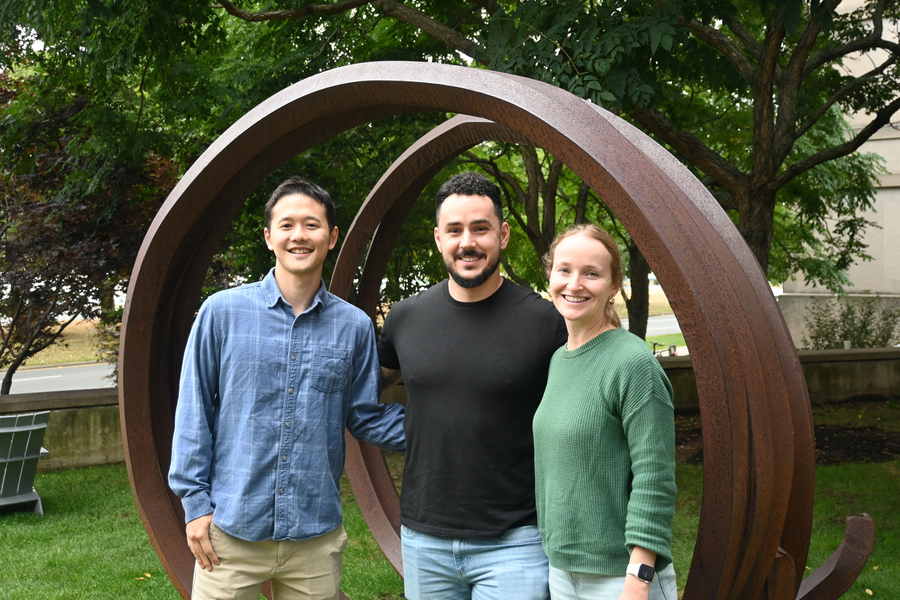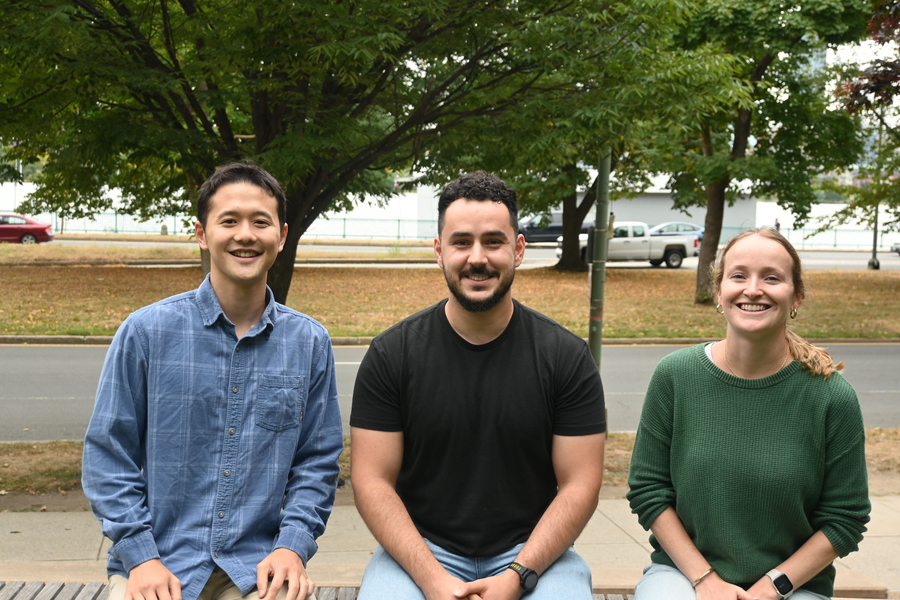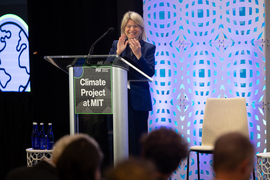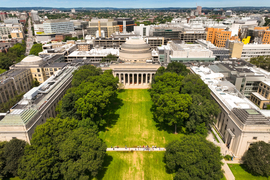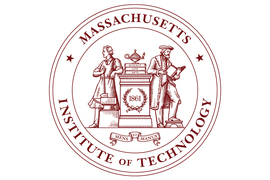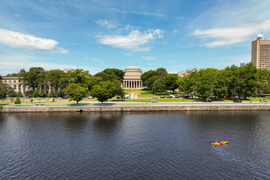One of MIT’s missions is helping to solve the world’s greatest problems — with a large focus on one of the most pressing topics facing the world today, climate change. The MIT Energy and Climate Club, (MITEC) formerly known as the MIT Energy Club, has been working since 2004 to inform and educate the entire MIT community about this urgent issue and other related matters.
MITEC, one of the largest clubs on campus, has hundreds of active members from every major, including both undergraduate and graduate students. With a broad reach across the Institute, MITEC is the hub for thought leadership and relationship-building across campus.
The club’s co-presidents Laurențiu Anton, doctoral candidate in electrical engineering and computer science; Rosie Keller, an MBA student in the MIT Sloan School of Management; and Thomas Lee, doctoral candidate in the Institute for Data, Systems, and Society, say that faculty, staff, and alumni are also welcome to join and interact with the continuously growing club.
While they closely collaborate on all aspects of the club, each of the co-presidents has a focus area to support the student managing directors and vice presidents for several of the club’s committees. Keller oversees the External Relations, Social, Launchpad, and Energy and Climate Hackathon leadership teams. Lee supports the leadership team for next spring’s Energy Conference. He also assists the club treasurer on budget and finance and guides the industry Sponsorships team. Anton oversees marketing, community and education as well as the Energy and Climate Night and Energy and Climate Career Fair leadership teams.
“We think of MITEC as the umbrella of all things related to energy and climate on campus. Our goal is to share actionable information and not just have discussions. We work with other organizations on campus, including the MIT Environmental Solutions Initiative, to bring awareness,” says Anton. “Our Community and Education team is currently working with the MIT ESI [Environmental Solutions Initiative] to create an ecosystem map that we’re excited to produce for the MIT community.”
To share their knowledge and get more people interested in solving climate and energy problems, each year MITEC hosts a variety of events including the MIT Energy and Climate Night, the MIT Energy and Climate Hack, the MIT Energy and Climate Career Fair, and the MIT Energy Conference to be held next spring March 3-4. The club also offers students the opportunity to gain valuable work experience while engaging with top companies, such as Constellation Energy and GE Vernova, on real climate and energy issues through their Launchpad Program.
Founded in 2006, the annual MIT Energy Conference is the largest student-run conference in North America focused on energy and climate issues, where hundreds of participants gather every year with the CEOs, policymakers, investors, and scholars at the forefront of the global energy transition.
“The 2025 MIT Energy Conference’s theme is ‘Breakthrough to Deployment: Driving Climate Innovation to Market’ — which focuses on the importance of both cutting-edge research innovation as well as large-scale commercial deployment to successfully reach climate goals,” says Lee.
Anton notes that the first of four MITEC flagship events the MIT Energy and Climate Night. This research symposium that takes place every year in the fall at the MIT Museum will be held on Nov. 8. The club invites a select number of keynote speakers and several dozen student posters. Guests are allowed to walk around and engage with students, and in return students get practice showcasing their research. The club’s career fair will take place in the spring semester, shortly after Independent Activities Period.
MITEC also provides members opportunities to meet with companies that are working to improve the energy sector, which helps to slow down, as well as adapt to, the effects of climate change.
“We recently went to Provincetown and toured Eversource’s battery energy storage facility. This helped open doors for club members,” says Keller. “The Provincetown battery helps address grid reliability problems after extreme storms on Cape Cod — which speaks to energy’s connection to both the mitigation and adaptation aspects of climate change,” adds Lee.
“MITEC is also a great way to meet other students at MIT that you might not otherwise have a chance to,” says Keller.
“We’d always welcome more undergraduate students to join MITEC. There are lots of leadership opportunities within the club for them to take advantage of and build their resumes. We also have good and growing collaboration between different centers on campus such as the Sloan Sustainability Initiative and the MIT Energy Initiative. They support us with resources, introductions, and help amplify what we're doing. But students are the drivers of the club and set the agendas,” says Lee.
All three co-presidents are excited to hear that MIT President Sally Kornbluth wants to bring climate change solutions to the next level, and that she recently launched The Climate Project at MIT to kick off the Institute’s major new effort to accelerate and scale up climate change solutions.
“We look forward to connecting with the new directors of the Climate Project at MIT and Interim Vice President for Climate Change Richard Lester in the near future. We are eager to explore how MITEC can support and collaborate with the Climate Project at MIT,” says Anton.
Lee, Keller, and Anton want MITEC to continue fostering solutions to climate issues. They emphasized that while individual actions like bringing your own thermos, using public transportation, or recycling are necessary, there’s a bigger picture to consider. They encourage the MIT community to think critically about the infrastructure and extensive supply chains behind the products everyone uses daily.
“It’s not just about bringing a thermos; it’s also understanding the life cycle of that thermos, from production to disposal, and how our everyday choices are interconnected with global climate impacts,” says Anton.
“Everyone should get involved with this worldwide problem. We’d like to see more people think about how they can use their careers for change. To think how they can navigate the type of role they can play — whether it’s in finance or on the technical side. I think exploring what that looks like as a career is also a really interesting way of thinking about how to get involved with the problem,” says Keller.
“MITEC’s newsletter reaches more than 4,000 people. We’re grateful that so many people are interested in energy and climate change,” says Anton.
